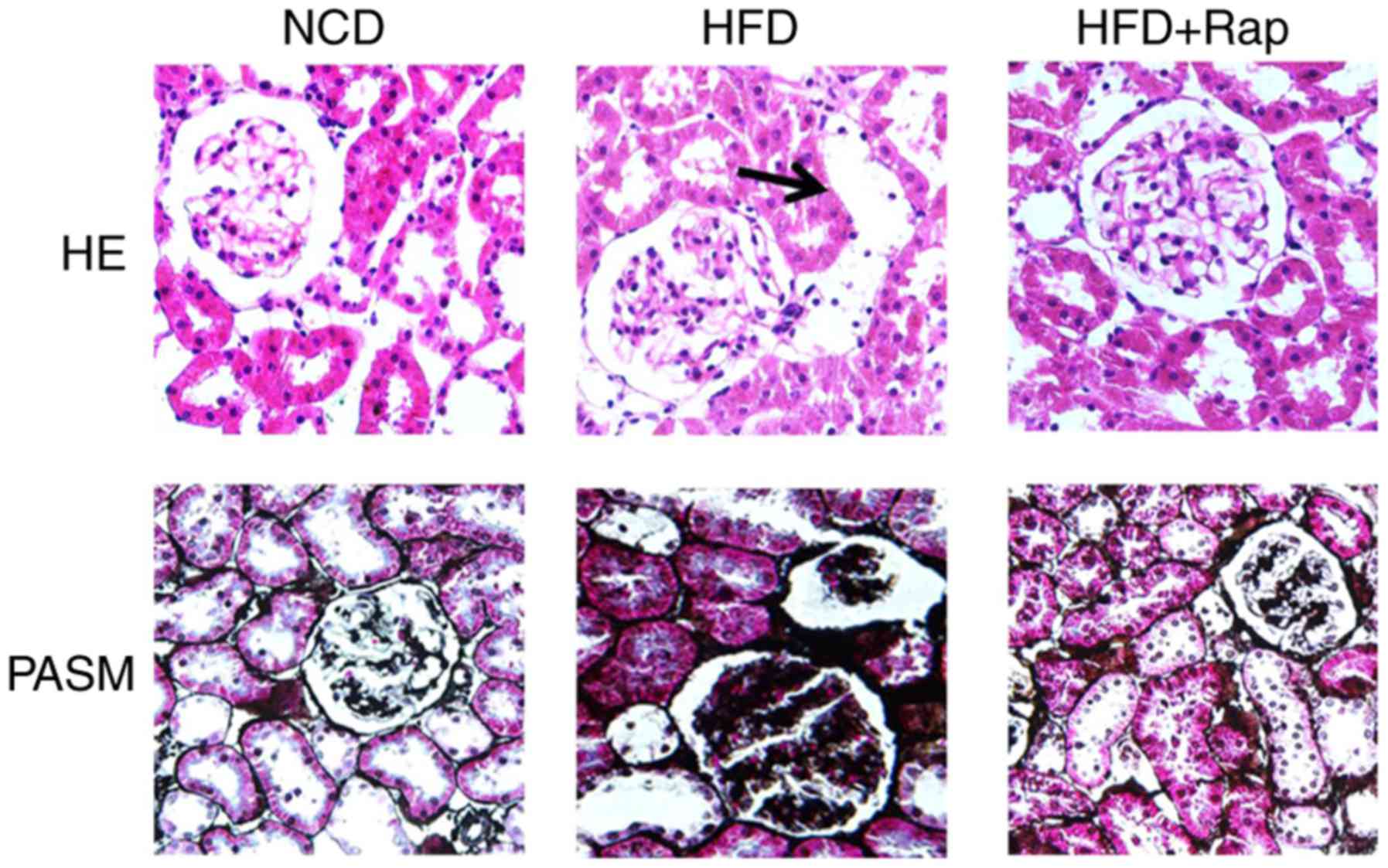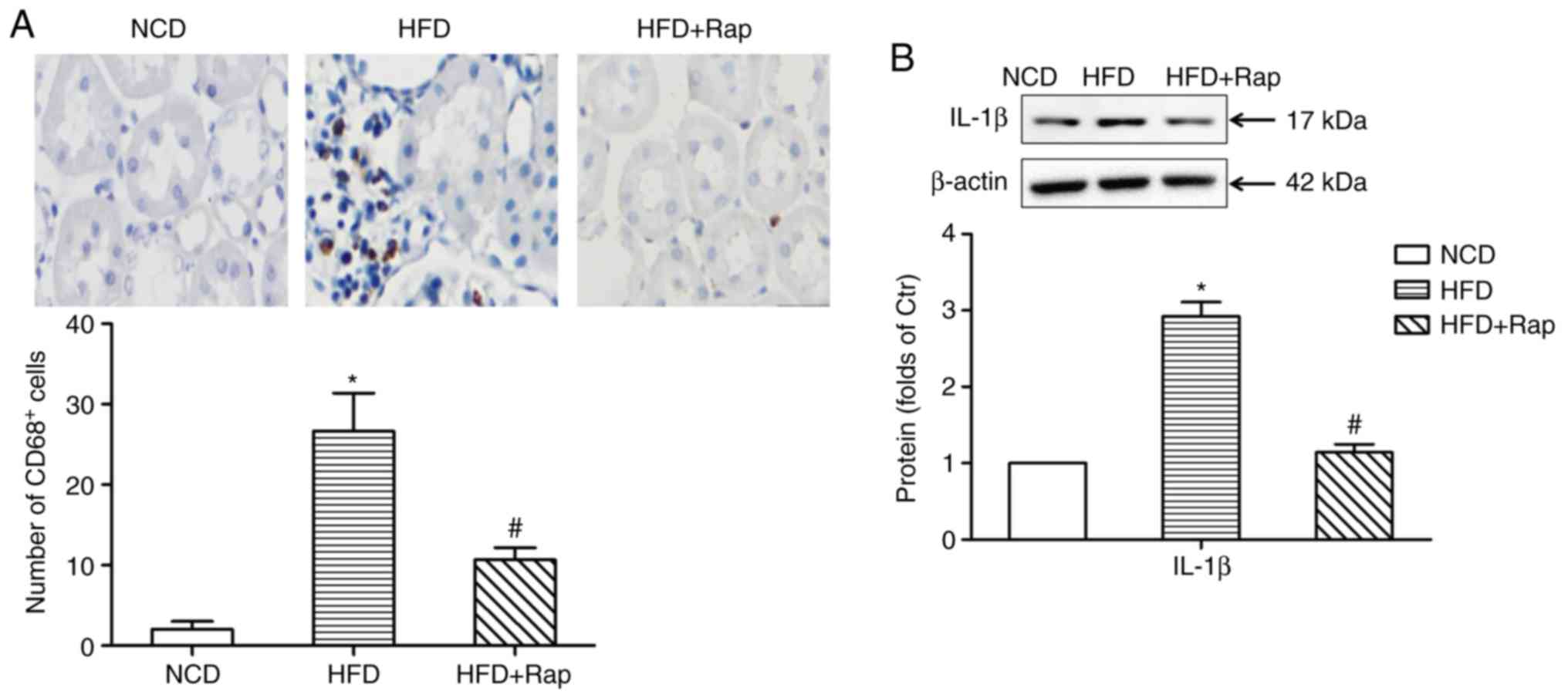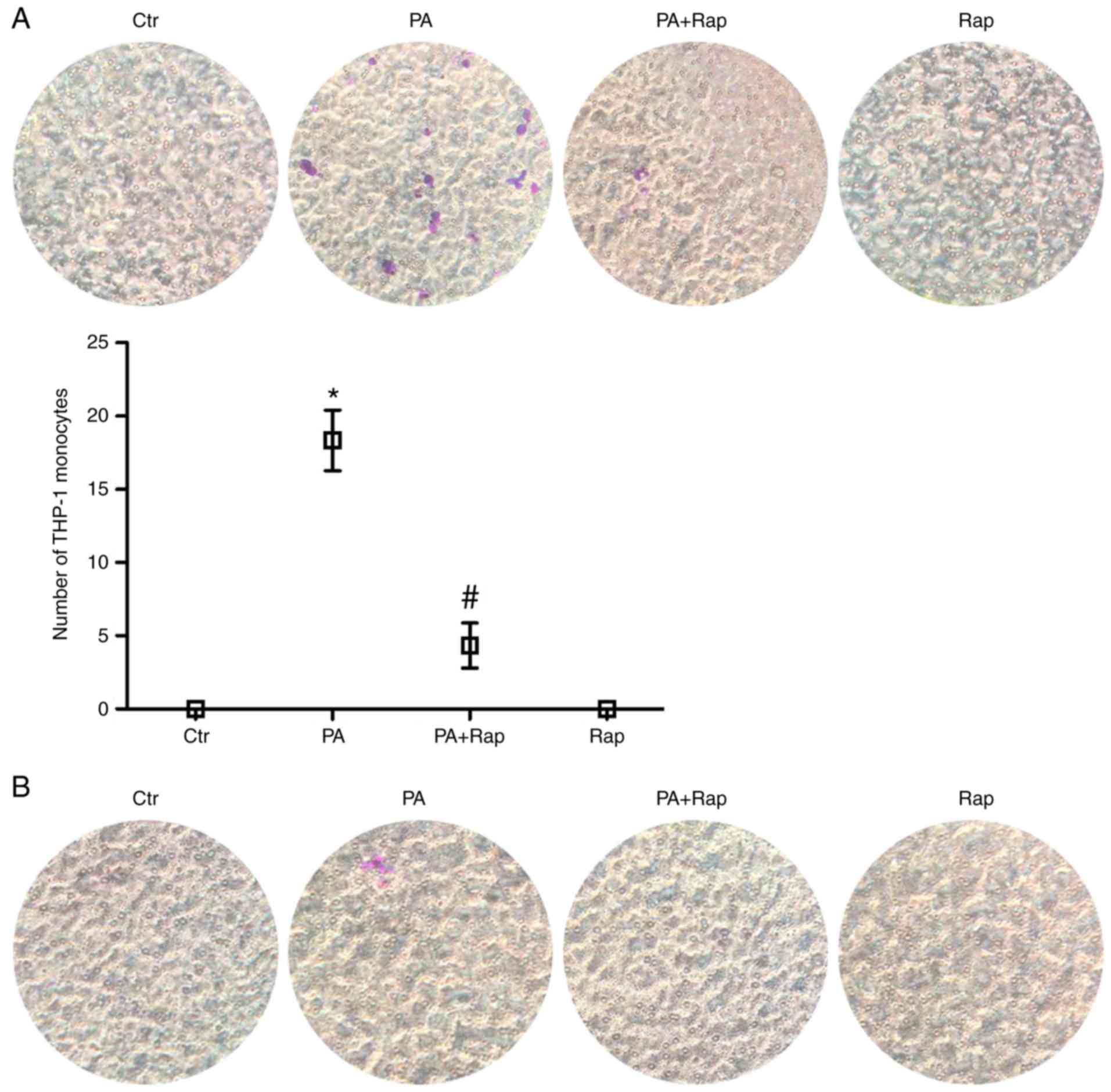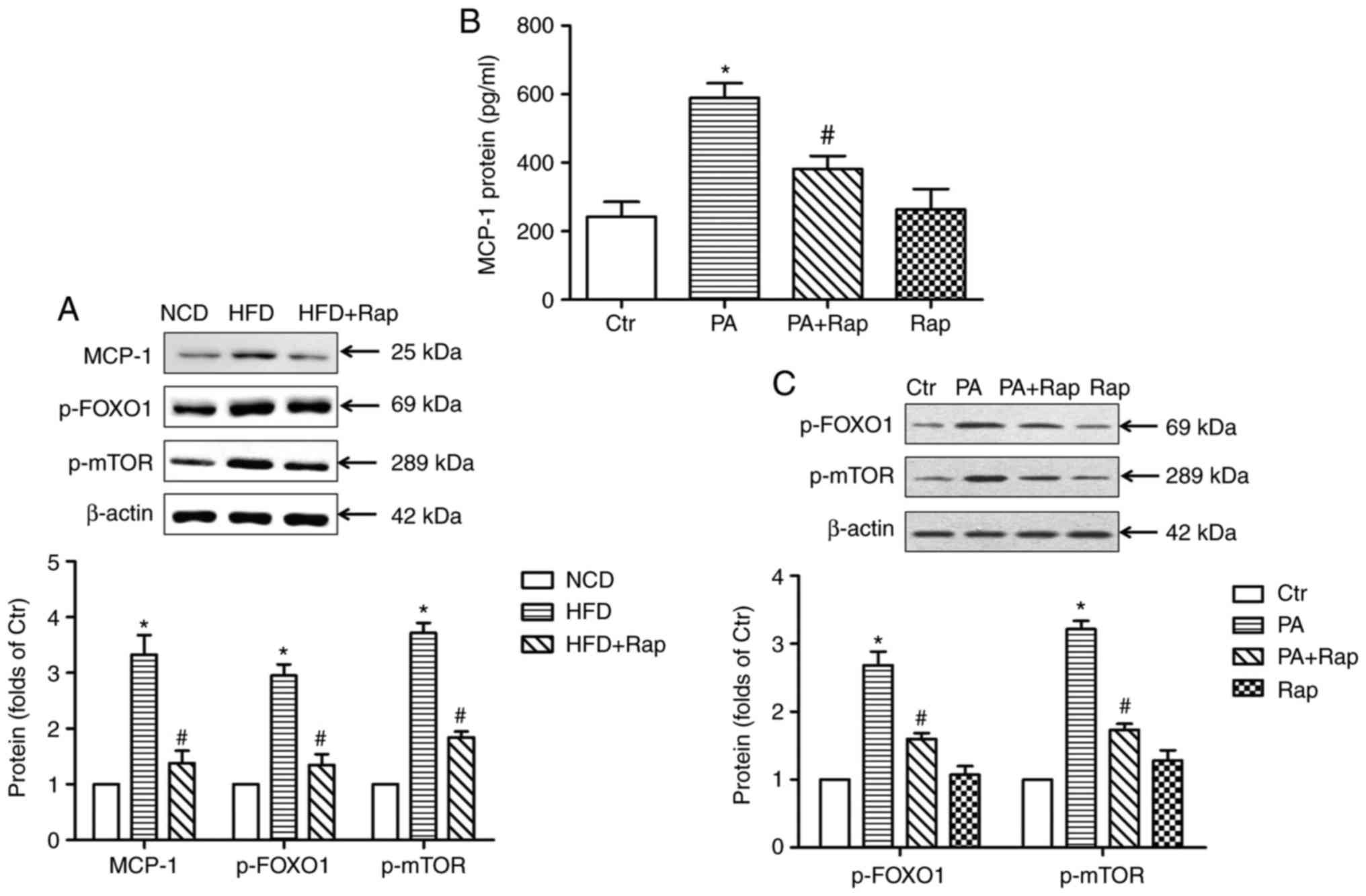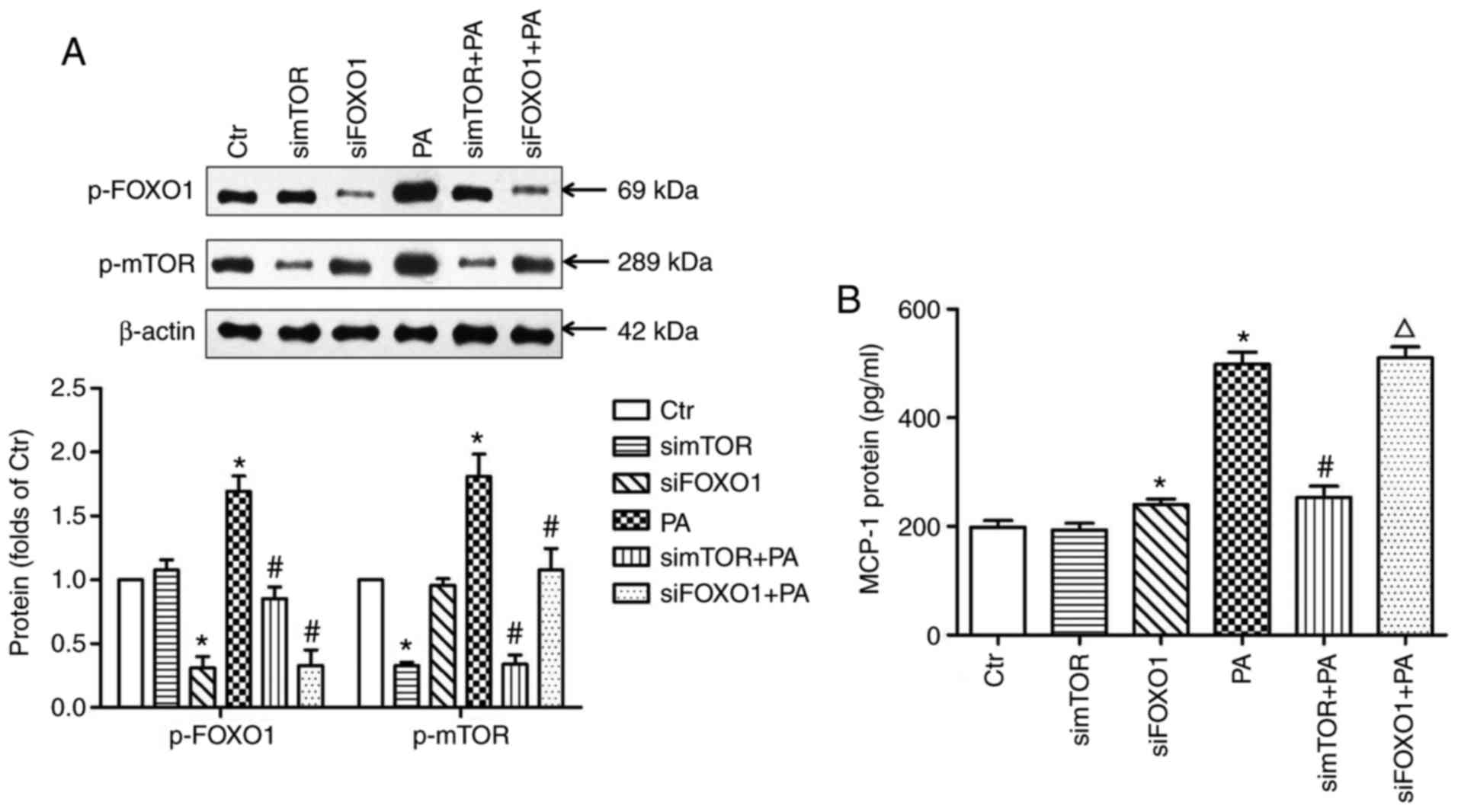|
1
|
Chade AR and Hall JE: Role of the renal
microcirculation in progression of chronic kidney injury in
obesity. Am J Nephrol. 44:354–367. 2016. View Article : Google Scholar : PubMed/NCBI
|
|
2
|
Declèves AE and Sharma K: Obesity and
kidney disease: Differential effects of obesity on adipose tissue
and kidney inflammation and fibrosis. Curr Opin Nephrol Hypertens.
24:28–36. 2015. View Article : Google Scholar : PubMed/NCBI
|
|
3
|
Redon J and Lurbe E: The kidney in
obesity. Curr Hypertens Rep. 17:5552015. View Article : Google Scholar : PubMed/NCBI
|
|
4
|
Li LC, Yang JL, Lee WC, Chen JB, Lee CT,
Wang PW, Vaghese Z and Chen WY: Palmitate aggravates
proteinuria-induced cell death and inflammation via
CD36-inflammasome axis in the proximal tubular cells of obese mice.
Am J Physiol Renal Physiol. Sep 19–2018.(Epub ahead of print). doi:
10.1152/ajprenal.00536.2017. View Article : Google Scholar
|
|
5
|
Li A, Wang J, Zhu D, Zhang X, Pan R and
Wang R: Arctigenin suppresses transforming growth factor-β1-induced
expression of monocyte chemoattractant protein-1 and the subsequent
epithelial-mesenchymal transition through reactive oxygen
species-dependent ERK/NF-κB signaling pathway in renal tubular
epithelial cells. Free radical research. 49:1095–1113. 2015.
View Article : Google Scholar : PubMed/NCBI
|
|
6
|
Lv LL, Feng Y, Wen Y, Wu WJ, Ni HF, Li ZL,
Zhou LT, Wang B, Zhang JD, Crowley SD and Liu BC: Exosomal CCL2
from tubular epithelial cells is critical for albumin-induced
tubulointerstitial inflammation. J Am Soc Nephrol. 29:919–935.
2018.PubMed/NCBI
|
|
7
|
Fu CP, Lee IT, Sheu WH, Lee WJ, Liang KW,
Lee WL and Lin SY: The levels of circulating and urinary monocyte
chemoattractant protein-1 are associated with chronic renal injury
in obese men. Clin Chim Acta. 413:1647–1651. 2012. View Article : Google Scholar : PubMed/NCBI
|
|
8
|
Lu X, Yin D, Zhou B and Li T: miR-135a
promotes inflammatory responses of vascular smooth muscle cells
from db/db mice via downregulation of FOXO1. Int Heart J.
59:170–179. 2018. View Article : Google Scholar : PubMed/NCBI
|
|
9
|
Xing YQ, Li A, Yang Y, Li XX, Zhang LN and
Guo HC: The regulation of FOXO1 and its role in disease
progression. Life Sci. 193:124–131. 2018. View Article : Google Scholar : PubMed/NCBI
|
|
10
|
Puthanveetil P, Wan A and Rodrigues B:
FoxO1 is crucial for sustaining cardiomyocyte metabolism and cell
survival. Cardiovasc Res. 97:393–403. 2013. View Article : Google Scholar : PubMed/NCBI
|
|
11
|
Maiese K, Chong ZZ, Hou J and Shang YC:
The ‘O’ class: Crafting clinical care with FoxO transcription
factors. Adv Exp Med Biol. 665:242–260. 2009. View Article : Google Scholar : PubMed/NCBI
|
|
12
|
Qin G, Zhou Y, Guo F, Ren L, Wu L, Zhang
Y, Ma X and Wang Q: Overexpression of the FoxO1 ameliorates
mesangial cell dysfunction in male diabetic rats. Mol Endocrinol.
29:1080–1091. 2015. View Article : Google Scholar : PubMed/NCBI
|
|
13
|
Du M, Wang Q, Li W, Ma X, Wu L, Guo F,
Zhao S, Huang F, Wang H and Qin G: Overexpression of FOXO1
ameliorates the podocyte epithelial-mesenchymal transition induced
by high glucose in vitro and in vivo. Biochem Biophys Res Commun.
471:416–422. 2016. View Article : Google Scholar : PubMed/NCBI
|
|
14
|
Hsu CK, Lin CC, Hsiao LD and Yang CM:
Mevastatin ameliorates sphingosine 1-phosphate-induced
COX-2/PGE2-dependent cell migration via FoxO1 and CREB
phosphorylation and translocation. Br J Pharmacol. 172:5360–5376.
2015. View Article : Google Scholar : PubMed/NCBI
|
|
15
|
Li X, Zhang X, Pan Y, Shi G, Ren J, Fan H,
Dou H and Hou Y: mTOR regulates NLRP3 inflammasome activation via
reactive oxygen species in murine lupus. Acta Biochim Biophys Sin
(Shanghai). 50:888–896. 2018. View Article : Google Scholar : PubMed/NCBI
|
|
16
|
Zhang X, Howell GM, Guo L, Collage RD,
Loughran PA, Zuckerbraun BS and Rosengart MR: CaMKIV-dependent
preservation of mTOR expression is required for autophagy during
lipopolysaccharide-induced inflammation and acute kidney injury. J
Immunol. 193:2405–2415. 2014. View Article : Google Scholar : PubMed/NCBI
|
|
17
|
Jiang H, Westerterp M, Wang C, Zhu Y and
Ai D: Macrophage mTORC1 disruption reduces inflammation and insulin
resistance in obese mice. Diabetologia. 57:2393–2404. 2014.
View Article : Google Scholar : PubMed/NCBI
|
|
18
|
Paschoal VA, Amano MT, Belchior T,
Magdalon J, Chimin P, Andrade ML, Ortiz-Silva M, Castro É,
Yamashita AS, Rosa Neto JC, et al: mTORC1 inhibition with rapamycin
exacerbates adipose tissue inflammation in obese mice and
dissociates macrophage phenotype from function. Immunobiology.
222:261–271. 2017. View Article : Google Scholar : PubMed/NCBI
|
|
19
|
Perl A: mTOR activation is a biomarker and
a central pathway to autoimmune disorders, cancer, obesity, and
aging. Ann N Y Acad Sci. 1346:33–44. 2015. View Article : Google Scholar : PubMed/NCBI
|
|
20
|
Yang P, Xiao Y, Luo X, Zhao Y, Zhao L,
Wang Y, Wu T, Wei L and Chen Y: Inflammatory stress promotes the
development of obesity-related chronic kidney disease via CD36 in
mice. J Lipid Res. 58:1417–1427. 2017. View Article : Google Scholar : PubMed/NCBI
|
|
21
|
Wang B, Ding W, Zhang M, Li H and Gu Y:
Rapamycin attenuates aldosterone-induced tubulointerstitial
inflammation and fibrosis. Cell Physiol Biochem. 35:116–125. 2015.
View Article : Google Scholar : PubMed/NCBI
|
|
22
|
Lu Y, Cheng J, Chen L, Li C, Chen G, Gui
L, Shen B and Zhang Q: Endoplasmic reticulum stress involved in
high-fat diet and palmitic acid-induced vascular damages and
fenofibrate intervention. Biochem Biophys Res Commun. 458:1–7.
2015. View Article : Google Scholar : PubMed/NCBI
|
|
23
|
Mu Y, Yin TL, Yin L, Hu X and Yang J:
CTRP3 attenuates high-fat diet-induced male reproductive
dysfunction in mice. Clin Sci (Lond). 132:883–899. 2018. View Article : Google Scholar : PubMed/NCBI
|
|
24
|
Ting SM, Nair H, Ching I, Taheri S and
Dasgupta I: Overweight, obesity and chronic kidney disease. Nephron
Clin Pract. 112:C121–C127. 2009. View Article : Google Scholar : PubMed/NCBI
|
|
25
|
Haller H, Bertram A, Nadrowitz F and Menne
J: Monocyte chemoattractant protein-1 and the kidney. Curr Opin
Nephrol Hypertens. 25:42–49. 2016. View Article : Google Scholar : PubMed/NCBI
|
|
26
|
Lv W, Booz GW, Wang Y, Fan F and Roman RJ:
Inflammation and renal fibrosis: Recent developments on key
signaling molecules as potential therapeutic targets. Eur J
Pharmacol. 820:65–76. 2018. View Article : Google Scholar : PubMed/NCBI
|
|
27
|
Chen P, Shi X, Xu X, Lin Y, Shao Z, Wu R
and Huang L: Liraglutide ameliorates early renal injury by the
activation of renal FoxO1 in a type 2 diabetic kidney disease rat
model. Diabetes Res Clin Pract. 137:173–182. 2018. View Article : Google Scholar : PubMed/NCBI
|
|
28
|
Hong YA, Bae SY, Ahn SY, Kim J, Kwon YJ,
Jung WY and Ko GJ: Resveratrol ameliorates contrast induced
nephropathy through the activation of SIRT1-PGC-1α-Foxo1 signaling
in mice. Kidney Blood Press Res. 42:641–653. 2017. View Article : Google Scholar : PubMed/NCBI
|
|
29
|
Mehaffey E and Majid DSA: Tumor necrosis
factor-α, kidney function, and hypertension. Am J Physiol Renal
Physiol. 313:F1005–F1008. 2017. View Article : Google Scholar : PubMed/NCBI
|

















